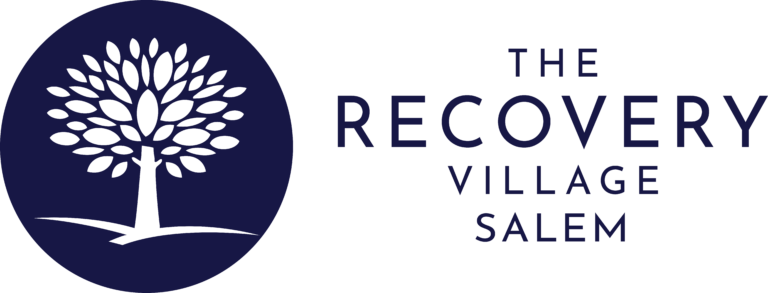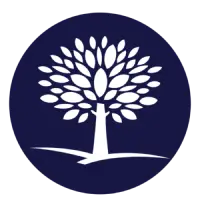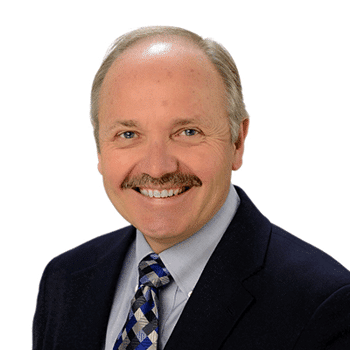Navigating the continuum of addiction treatment can feel overwhelming when trying to determine the most appropriate level of care. Two critical options that bridge the gap between residential treatment and traditional outpatient therapy are Intensive Outpatient Programs (IOP) and Partial Hospitalization Programs (PHP). Understanding the differences between these treatment modalities, their benefits, and which circumstances call for each approach is essential for making informed decisions about addiction recovery care.
Understanding the Continuum of Care
Addiction treatment exists on a continuum that ranges from the most intensive 24-hour residential care to less intensive outpatient services. This continuum is designed to meet individuals where they are in their recovery journey while providing the appropriate level of support and intervention. The goal is to provide the least restrictive level of care that can still effectively address treatment needs and maintain safety.
The continuum typically includes residential or inpatient treatment, partial hospitalization programs, intensive outpatient programs, and standard outpatient therapy. Each level serves specific needs and circumstances, allowing individuals to step down through levels of care as they progress in recovery or step up to more intensive services if additional support becomes necessary.
Partial Hospitalization Programs (PHP)
Program Structure and Intensity
Partial Hospitalization Programs represent one of the most intensive levels of outpatient care available. These programs typically require participants to attend treatment for 4-8 hours per day, 5-7 days per week, providing a structured therapeutic environment while allowing individuals to return home each evening. The intensity of PHP makes it an ideal step-down from residential treatment or an alternative to inpatient care for those who don’t require 24-hour supervision.
Ready to Break Free From Addiction?
If you’re seeking help for yourself or a loved one, our expert team is here to guide you every step of the way. Don’t wait—start your journey to recovery today.
PHP schedules are designed to provide comprehensive treatment during daytime hours, usually running from morning through afternoon or early evening. This structure allows participants to maintain some connection to their home environment while receiving intensive therapeutic support during the most challenging parts of the day when cravings and triggers may be strongest.
Treatment Components
Comprehensive PHP programs include multiple therapeutic modalities delivered throughout each treatment day. Individual therapy sessions provide personalized attention to specific treatment goals, trauma issues, and individual challenges. Group therapy forms the backbone of most PHP programming, offering peer support, skill development, and the opportunity to practice new behaviors in a safe environment.
Family therapy components address the systemic nature of addiction and help repair relationships damaged by substance use. Educational sessions provide information about addiction, recovery, relapse prevention, and life skills necessary for sustained sobriety. Many programs also include recreational therapy, art therapy, or other experiential approaches that address healing through alternative modalities.
Medical and Psychiatric Services
PHP programs typically include comprehensive medical and psychiatric services as part of their programming. Regular psychiatric evaluations ensure that mental health conditions are properly diagnosed and treated alongside addiction. Medication management services provide ongoing monitoring and adjustment of psychiatric medications that support recovery.
Medical monitoring addresses the physical health issues commonly associated with addiction, including chronic conditions that may have developed or worsened during active substance use. Nursing staff are typically available during program hours to address medical concerns and ensure participant safety.
Ideal Candidates for PHP
PHP is most appropriate for individuals who require intensive treatment but can safely return home each evening. This includes people transitioning from residential treatment who need continued intensive support while beginning to reintegrate into their community. Individuals with moderate to severe addiction who have stable housing and minimal safety concerns may also benefit from PHP as an alternative to residential care.
Those with co-occurring mental health conditions often benefit from the intensive psychiatric services available in PHP settings. Individuals who have experienced multiple relapses or who struggle with traditional outpatient treatment may need the increased structure and support that PHP provides.
Intensive Outpatient Programs (IOP)
Program Structure and Flexibility
Intensive Outpatient Programs offer a more flexible approach to addiction treatment while still providing significantly more support than traditional weekly therapy sessions. IOP typically involves 3-4 hours of programming, 3-4 days per week, allowing participants to maintain work, school, or family responsibilities while receiving comprehensive treatment.
Many IOP programs offer evening or weekend scheduling options to accommodate various life circumstances. This flexibility makes IOP accessible to individuals who cannot take extended time away from their responsibilities but still need intensive support for their recovery.
Treatment Focus and Modalities
IOP programming emphasizes skill development, relapse prevention, and community integration while providing ongoing therapeutic support. Group therapy remains central to most IOP programs, offering peer support and the opportunity to practice new coping skills in a supportive environment.
Individual therapy sessions in IOP focus on personal recovery goals, addressing underlying issues that contribute to addiction, and developing personalized relapse prevention strategies. Family therapy components help address relationship issues and build family support for recovery.
Educational components teach practical life skills, stress management techniques, and strategies for managing triggers and cravings in real-world situations. Many programs also incorporate mindfulness training, wellness activities, and other holistic approaches to support overall recovery.
Real-World Application
One of the key advantages of IOP is the opportunity to immediately apply newly learned skills in real-world situations. Participants can practice coping strategies during work stress, social situations, and family interactions, then process these experiences in group and individual therapy sessions.
This real-time application and processing helps individuals build confidence in their ability to maintain recovery while managing the challenges of daily life. The ongoing support provides accountability and assistance when difficulties arise.
Ideal Candidates for IOP
IOP is well-suited for individuals who have completed a higher level of care and are ready for increased independence while maintaining significant therapeutic support. This includes people transitioning from PHP or residential treatment who have demonstrated stability and readiness for less intensive care.
Individuals with less severe addiction who have stable housing, employment, and family support may be able to begin treatment at the IOP level. Those who have experienced a relapse but don’t require detoxification or residential care may also benefit from IOP services.
Key Differences Between PHP and IOP
Time Commitment and Intensity
The most obvious difference between PHP and IOP lies in the time commitment required. PHP demands a near full-time commitment similar to a job, while IOP allows for continuation of work, school, or other responsibilities. This difference in intensity corresponds to different levels of structure, support, and therapeutic intervention.
PHP provides more hours of direct therapeutic contact, allowing for deeper exploration of issues and more intensive skill development. IOP offers fewer therapy hours but emphasizes the practical application of skills in daily life situations.
Level of Medical Support
PHP programs typically include more comprehensive medical and psychiatric services, with healthcare professionals available throughout program hours. This enhanced medical support makes PHP appropriate for individuals with complex medical or psychiatric needs that require regular monitoring.
IOP programs may include some medical services but typically focus more on psychosocial interventions. Participants may need to coordinate separately with primary care physicians or psychiatrists for medical needs.
Therapeutic Environment
PHP creates a more controlled therapeutic environment where participants spend most of their day engaged in treatment activities with peers who are also in recovery. This intensive therapeutic milieu can provide significant support during vulnerable early recovery periods.
IOP offers a less intensive therapeutic environment that gradually transitions participants back to community life while maintaining therapeutic support. This approach helps bridge the gap between intensive treatment and independent recovery management.
Transitioning Between Levels of Care
Step-Down Progression
The most common progression involves stepping down from more intensive to less intensive levels of care as individuals demonstrate stability and progress in recovery. A typical progression might include medical detox, residential treatment, PHP, IOP, and finally traditional outpatient therapy.
This step-down approach allows individuals to gradually assume more independence and responsibility while maintaining therapeutic support. Each transition is based on clinical assessment of readiness, stability, and the ability to maintain recovery with less intensive support.
Step-Up When Needed
Sometimes individuals need to move to a more intensive level of care due to increased symptoms, life stressors, or relapse risk. The ability to step up to PHP from IOP or to residential treatment from PHP provides important safety nets during the recovery process.
Clinical teams regularly assess participant progress and adjust treatment intensity as needed. This flexibility ensures that individuals receive the appropriate level of care throughout their recovery journey.
Factors Influencing Transitions
Several factors influence decisions about transitioning between levels of care. Clinical stability, including mental health symptoms and substance use patterns, plays a primary role in determining readiness for level changes. Social support systems, housing stability, and the ability to manage daily responsibilities also influence transition decisions.
Individual motivation, engagement in treatment, and demonstrated use of coping skills provide additional indicators of readiness for transitions. External factors such as legal obligations, family circumstances, and employment situations may also influence timing of level changes.
Treatment Outcomes and Effectiveness
Research on PHP Effectiveness
Research demonstrates that PHP can be highly effective for individuals who might otherwise require residential treatment. Studies show that PHP participants often achieve outcomes similar to those in residential treatment while maintaining connection to their community and support systems.
The intensive nature of PHP allows for comprehensive assessment and treatment of co-occurring disorders, which contributes to better overall outcomes. The ability to practice skills in real-world situations while maintaining intensive support appears to enhance skill generalization and retention.
IOP Success Factors
IOP effectiveness is enhanced when participants have adequate social support, stable housing, and manageable life stressors. The flexibility of IOP allows individuals to maintain employment and family responsibilities, which can contribute to long-term recovery sustainability.
Success in IOP often depends on individual motivation and readiness for recovery. Those who actively engage in programming and utilize learned skills in daily life typically achieve better outcomes than those who participate passively.
Factors Affecting Success
Several factors influence success in both PHP and IOP programs. Treatment engagement and active participation in therapeutic activities consistently predict better outcomes. The quality of therapeutic relationships with counselors and peers also significantly impacts success.
Social support systems, both within and outside of treatment, play crucial roles in recovery outcomes. Individuals with strong family support, sober social networks, and stable living environments typically achieve better results regardless of treatment level.
Special Populations and Considerations
Young Adults
Young adults may particularly benefit from IOP programming that allows them to continue school or work while receiving treatment. The flexibility of IOP can help young people maintain important developmental activities while addressing addiction issues.
However, some young adults may require the increased structure and supervision provided by PHP, particularly if they lack stable support systems or have experienced multiple treatment episodes. Clinical assessment must consider developmental factors and social circumstances when recommending treatment levels.
Working Professionals
Working professionals often prefer IOP programming that accommodates work schedules and allows them to maintain career responsibilities. Evening or weekend IOP programs can provide necessary treatment while minimizing career disruption.
Some professionals may benefit from PHP if their addiction has significantly impacted work performance or if they have medical leave available. The intensive nature of PHP may allow for more rapid stabilization and return to full functioning.
Parents and Caregivers
Parents and primary caregivers face unique challenges in accessing treatment due to childcare responsibilities. IOP programs that provide childcare services or flexible scheduling can make treatment more accessible for this population.
Some parents may require PHP services but need additional support to manage childcare during treatment hours. Family-centered approaches that include children in appropriate treatment activities can help address these challenges.
Insurance and Financial Considerations
Coverage Differences
Insurance coverage for PHP and IOP varies significantly among providers and plans. PHP typically costs more than IOP due to the increased intensity and number of services provided. Many insurance plans provide coverage for both levels of care when medically necessary.
Prior authorization requirements may differ between PHP and IOP, with PHP sometimes requiring more extensive documentation of medical necessity. Understanding insurance benefits and requirements is important for treatment planning and financial planning.
Cost-Effectiveness
Both PHP and IOP can be cost-effective alternatives to residential treatment for appropriate candidates. PHP may prevent the need for residential treatment while providing intensive services. IOP can extend treatment benefits while allowing individuals to maintain income through continued employment.
The cost-effectiveness of each program depends on individual circumstances, treatment needs, and insurance coverage. Long-term cost savings from successful treatment often outweigh initial program costs.
Financial Assistance
Many treatment programs offer sliding scale fees, payment plans, or scholarship programs to make treatment accessible regardless of financial circumstances. State funding, grants, and other assistance programs may be available for qualified individuals.
Understanding all available financial options can help ensure that financial barriers don’t prevent access to appropriate treatment. Treatment programs typically have financial counselors who can help explore payment options and assistance programs.
Making the Right Choice
Clinical Assessment
The decision between PHP and IOP should be based on comprehensive clinical assessment that considers addiction severity, mental health status, social support systems, housing stability, and individual circumstances. Qualified addiction professionals can conduct assessments and make appropriate recommendations.
Assessment should also consider previous treatment history, response to different levels of care, and individual preferences and goals. The assessment process helps ensure that treatment recommendations align with both clinical needs and personal circumstances.
Individual Factors
Personal factors such as work obligations, family responsibilities, transportation availability, and financial resources all influence the appropriateness of different treatment levels. These practical considerations must be balanced with clinical needs to develop realistic treatment plans.
Individual learning styles, motivation levels, and preferred approaches to treatment may also influence which program type is most suitable. Some individuals thrive in the intensive structure of PHP, while others benefit from the gradual integration approach of IOP.
Trial Periods and Adjustments
Many programs offer trial periods or assessment phases that allow individuals and clinical teams to evaluate fit and effectiveness. This approach recognizes that initial assessments may not capture all relevant factors and allows for adjustments based on actual program participation.
Flexibility in treatment planning acknowledges that recovery is a dynamic process and that treatment needs may change over time. Regular reassessment ensures that treatment intensity continues to match current needs and circumstances.
Integration with Comprehensive Treatment
Coordination with Other Services
Both PHP and IOP work best when integrated with other recovery services and supports. This may include medication assisted treatment, psychiatric care, primary medical care, and social services.
Coordination among providers ensures that all aspects of recovery are addressed and that services complement rather than conflict with each other. Good communication among treatment team members enhances overall treatment effectiveness.
Long-Term Recovery Planning
PHP and IOP programs should include planning for long-term recovery maintenance beyond the intensive treatment phase. This includes developing ongoing therapy relationships, connecting with peer support groups, and creating sustainable recovery practices.
Recovery planning should address potential challenges and develop strategies for maintaining recovery gains over time. This forward-thinking approach helps prevent relapse and supports long-term recovery success.
Future Considerations and Innovations
Technology Integration
Many PHP and IOP programs are incorporating technology to enhance treatment delivery and extend support beyond program hours. This may include mobile apps for skill practice, online support groups, and telemedicine services.
Technology can also enhance family involvement and provide additional resources for recovery maintenance. However, technology should supplement rather than replace personal therapeutic relationships and face-to-face interactions.
Specialized Programming
The development of specialized PHP and IOP programs for specific populations or conditions continues to expand. This includes programs for healthcare professionals, individuals with co-occurring disorders, trauma survivors, and other specialized groups.
Specialized programming allows for more targeted interventions that address the unique needs and circumstances of specific populations. This specialization can enhance treatment relevance and effectiveness.
Hope and Recovery
Both PHP and IOP offer valuable pathways to recovery that can accommodate different needs, circumstances, and preferences. The availability of multiple levels of care ensures that individuals can access appropriate treatment regardless of their specific situation.
Success in either program type depends largely on individual engagement, social support, and ongoing commitment to recovery. Both levels of care have helped thousands of individuals achieve and maintain recovery while preserving important life activities and relationships.
For individuals considering Salem drug and alcohol rehab options, understanding the differences between PHP and IOP can help in making informed decisions about treatment. Quality programs provide comprehensive assessment services to help determine the most appropriate level of care for each individual’s needs.
The journey of recovery is unique for each person, and having flexible treatment options that can adapt to changing needs provides important support throughout the process. Whether through PHP, IOP, or inpatient treatment, the goal remains the same: supporting individuals in achieving lasting recovery and rebuilding fulfilling lives.
Understanding insurance for rehab coverage for different levels of care helps ensure that financial considerations don’t prevent access to appropriate treatment. Many insurance plans provide coverage for both PHP and IOP when medically necessary, making these valuable treatment options accessible to those who need them.


